The Fluke FiberLert-125 is a straightforward tool. Its aim is to simply detect the wavelengths of light that are emitted in optical networking. While we have seen a number of Fluke tools previously, the FiberL ert-125 sells for under $120 and has a single purpose without fancy logging capabilities. In this review, we are going to look at the unit, and show you what it does.
Fluke FiberLert-125 Hardware Overview
The FiberLert comes in a pen size form factor, although it is much larger than a pen. It even has a clip to secure it into a pocket.
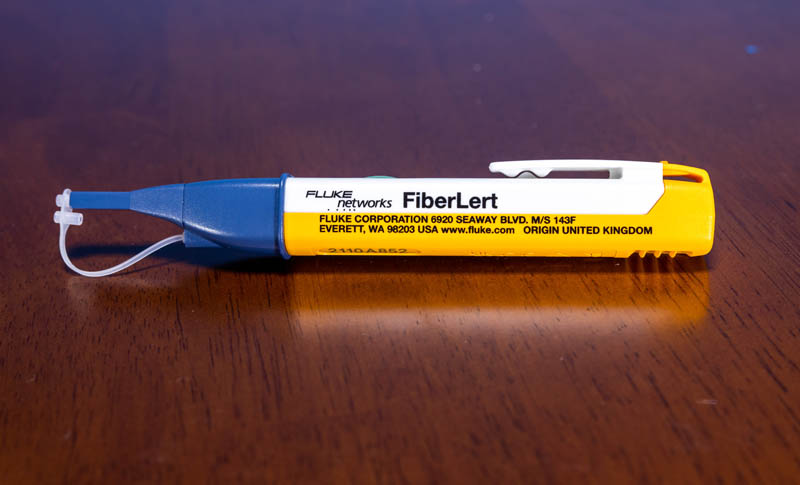
On the other end is the detector, so it has to be covered when not in use to prevent dust or other contaminants from blocking the sensor.
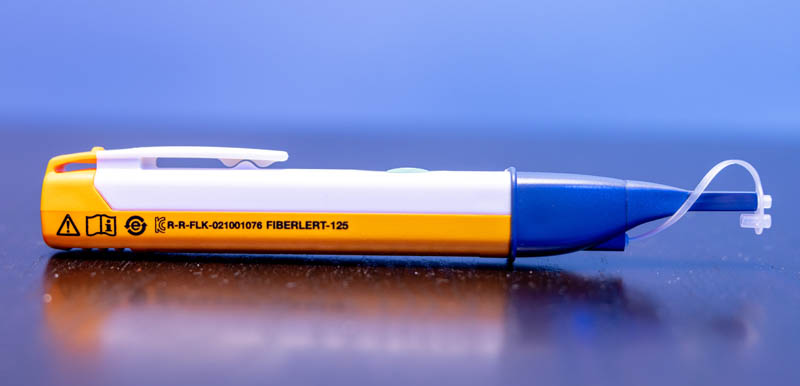
Here is a look at the detector tip uncovered.
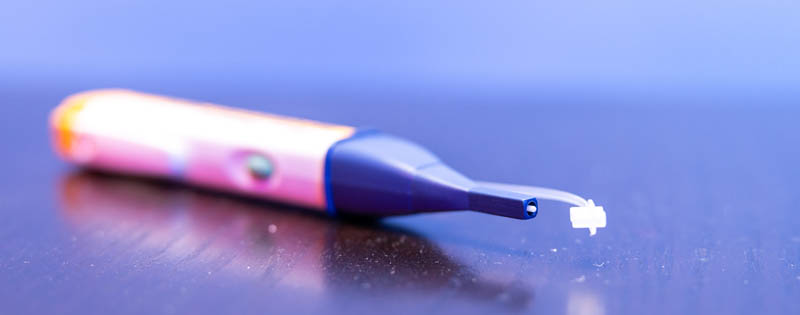
The main interface control is simply a button on the top of the unit. Feedback is audible and visual via a LED and we will show the LED shortly.
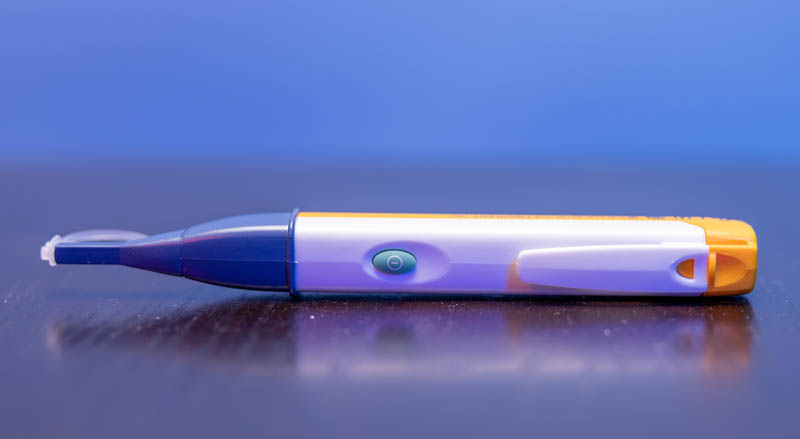
Near the top of the clip end, there is a latch allowing one to open the FiberLert.
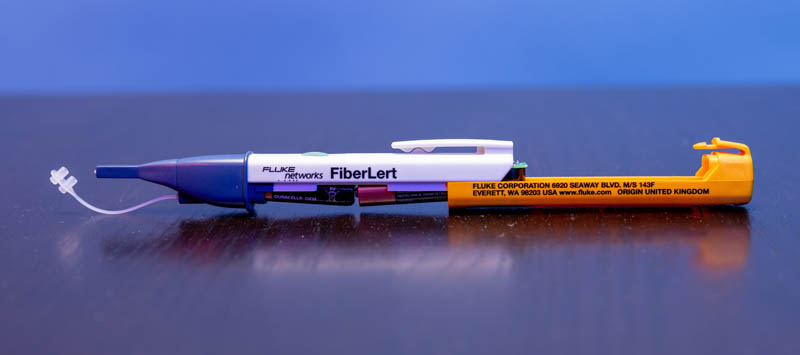
Inside, the device is powered by two AAA batteries.
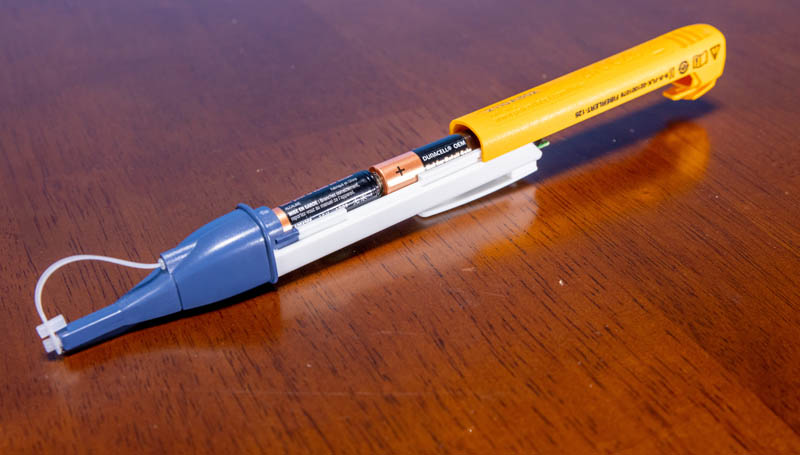
Overall this is a simple device.
See if Fiber is Lit Quickly with the Fluke Fiberlert
We normally do not showcase packaging, but the functionality is on the packaging basically in four bullets. This takes only a few seconds to learn how to use because it is simply a tool that looks for light used in fiber optics.
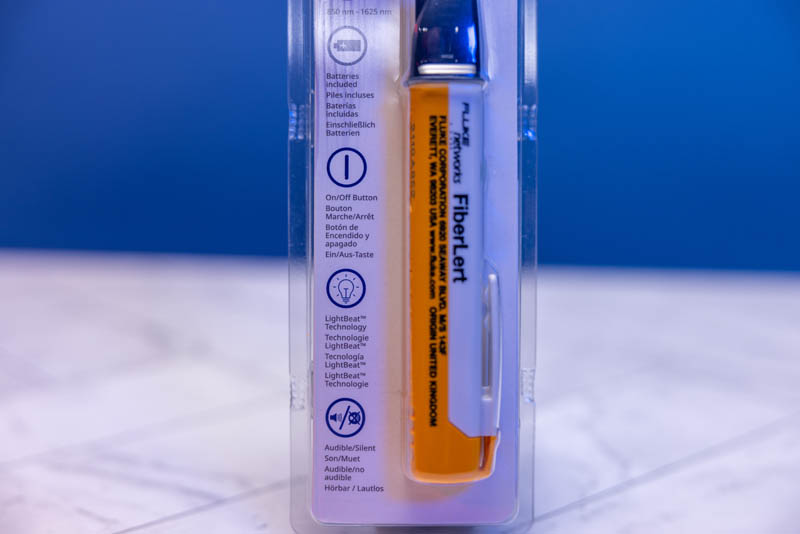
The two primary ways one will use this is to see if light is passing through a fiber optic cable. If it is, you will get a tone and a solid red LED light.
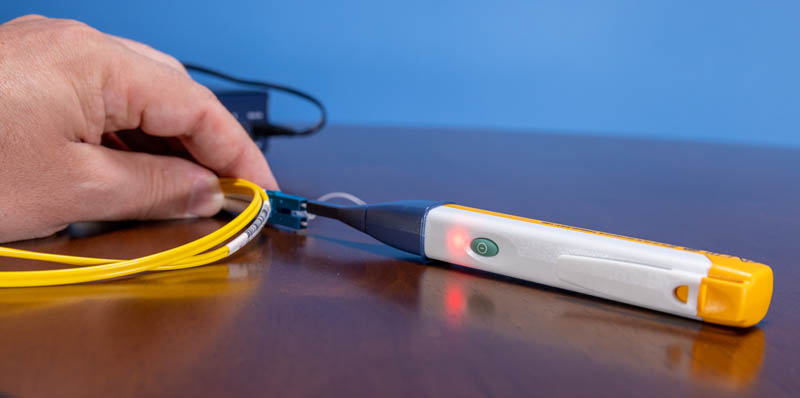
The second is to see if an optical emitter is active. As you can see, one simply needs to get the detection tip close to where light is supposed to be, and it is able to detect that light.
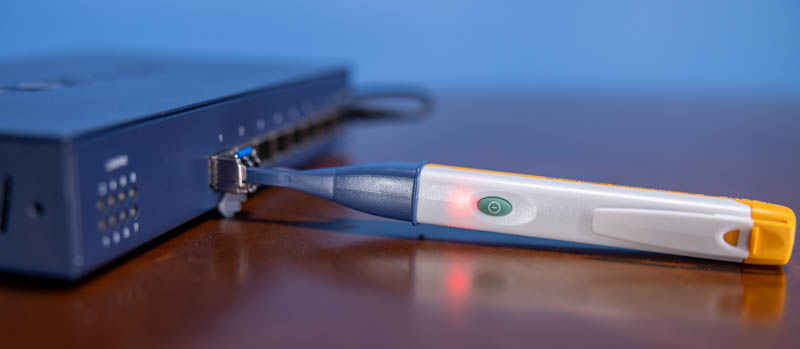
Another case where this can be used is testing patch panels. Just being able to verify things like where light is still passing for troubleshooting is useful. In other cases, being able to see which connection light is active among a group of fiber endpoints. This is useful to see installation features like MPO/MTP keying. This does not tell one the quality of the fiber connection, but it does show where light is passing. A quick device that can do that is useful to see if there is a portion of an installation that is not functioning properly.
Final Words
Using the unit worked as advertised. In some demonstrations, it sounds like you can simply wave the FiberLert and it will pick up the active fiber. In our experience, especially with loose fiber endpoints like the LC connector above, it takes a little bit more alignment to ensure the detection is happening. The FiberLert does not need to come into contact with the faces or necessarily be inside an optical module. We did need to have the tip close to the active fiber for it to pick up the light. That means if your alignment is off, you can get a false negative. As a result, the usage is often not 1-2 seconds for detection, but more like 10 seconds to ensure proper alignment.
Overall this is a simple and relatively inexpensive tool for those working with fiber. It is not going to replace higher-end units like the Fluke MultiFiber Pro but this is much less costly and has its place as a quick solution to a binary question.

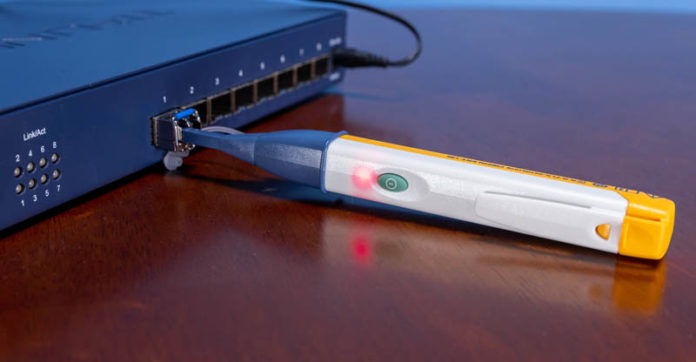



“ to simply detect the wavelengths of light that are emitted in optical networking.”
Does it work with a Visual Fault Locator’s frequency of light? It would make sense to have a pen sized emitter to work with the pen sized detector.
This combo if it works, would be great to point out in the article.
Daryl: You’ll want to look up the specs of both units to find your answer.